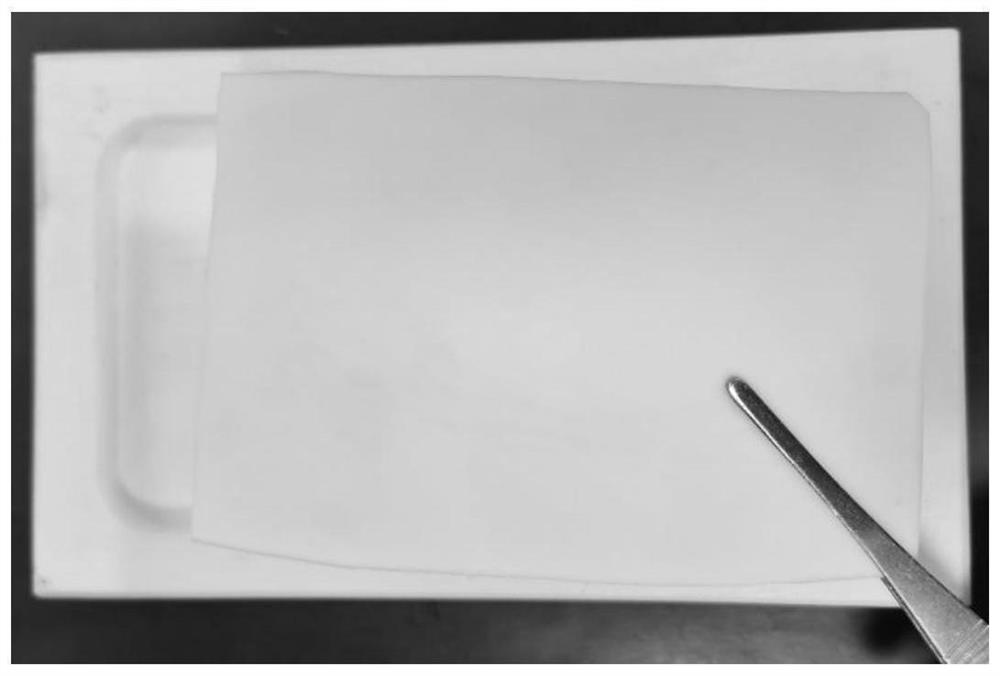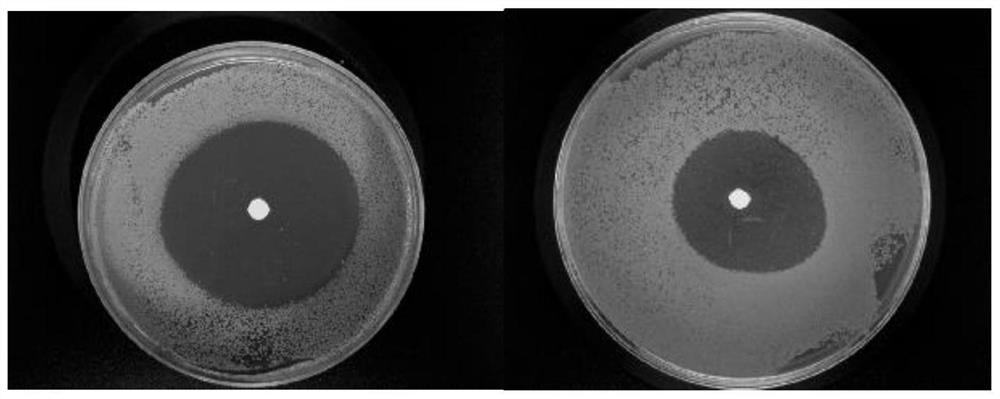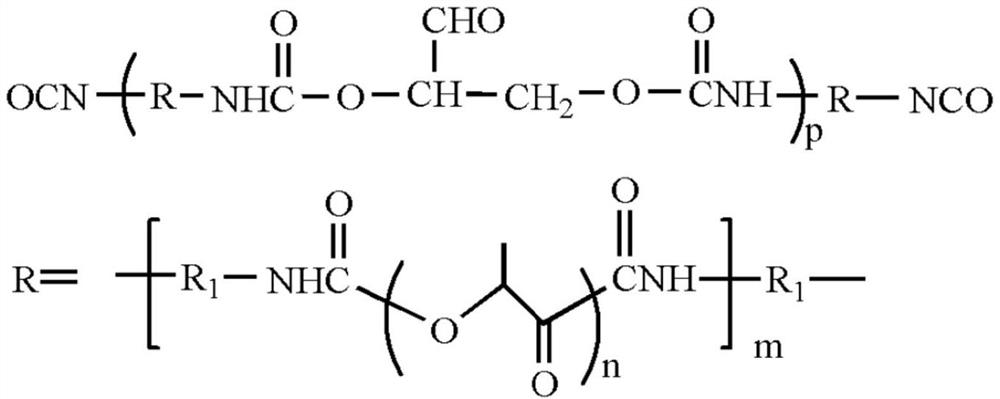Starch/epsilon-polylysine/poly (L-lactic acid) bi-crosslinking material as well as preparation method and application thereof
A technology of polylysine and double cross-linking, which is applied in the field of starch/ε-polylysine/poly double cross-linking materials and its preparation, can solve the problem that the material is easy to be polluted and moldy, it is difficult to exert antibacterial effect, and it is not considered and other issues, to achieve the effect of good broad-spectrum antibacterial properties, universal applicability, and good biocompatibility
- Summary
- Abstract
- Description
- Claims
- Application Information
AI Technical Summary
Problems solved by technology
Method used
Image
Examples
preparation example Construction
[0026] A kind of preparation method of starch / ε-polylysine / poly (L-lactic acid) double crosslinking material, comprises the following steps:
[0027] Add catalyst and starch dispersion to the isocyanate-terminated side chain aldehyde group-containing polyurethane prepolymer (PO) solution, heat up to 70-80°C and stir for reaction, after the infrared detection-NCO characteristic absorption peak disappears (about 30- 60min), cool the system down to 10-12°C, add ε-polylysine solution cooled to 10-12°C into the system, stir rapidly, pour it into the mold, degas, and stand at 40°C Let the solvent evaporate for about 10 days to form a film, and finally dry the film to a constant weight to obtain a starch / ε-polylysine / poly(L-lactic acid) double cross-linked film material. Preferably, the schematic diagram of PO structure is as follows:
[0028]
[0029] Among them, R 1 for n=80~135, m=2~5, p=4~9;
[0030] In some embodiments, the content of aldehyde groups in PO is 0.6-1.1 mmo...
Embodiment 1
[0052] Add the DMF dispersion of starch (3.4g dispersed in 20mL DMF) to 20g PO solution, and stir the reaction at 75°C until the infrared detection-NCO characteristic absorption peak disappears (about 40min). Cool the system down to 10°C, add ε-polylysine solution (1.5g dissolved in 5mL DMF) at 10°C under stirring, stir rapidly for 1-2min, remove the dissolved gas under reduced pressure, and pour it slowly into Put it into the mold, let it stand at 40°C to evaporate the solvent for about 10 days, and finally dry the membrane material to constant weight to obtain the starch / ε-polylysine / poly(L-lactic acid) double cross-linked membrane material, denoted as Q1.
Embodiment 2
[0054] Add the DMF dispersion of starch (3.4g dispersed in 20mL DMF) to the 20g PO solution, and react under stirring until the infrared detection-NCO characteristic absorption peak disappears (about 40min). Cool the system down to 10°C, add ε-polylysine solution (6.5g dissolved in 15mL DMF) at 10°C under stirring, remove the dissolved gas under reduced pressure after rapid stirring, and slowly pour it into the mold, 40 Stand at ℃ to evaporate the solvent for about 10 days, and finally dry the membrane material to a constant weight to obtain a starch / ε-polylysine / poly(L-lactic acid) double-crosslinked membrane material, which is designated as Q2.
PUM
| Property | Measurement | Unit |
|---|---|---|
| Particle size | aaaaa | aaaaa |
| Molecular weight | aaaaa | aaaaa |
| Number average molecular weight | aaaaa | aaaaa |
Abstract
Description
Claims
Application Information
 Login to View More
Login to View More - R&D
- Intellectual Property
- Life Sciences
- Materials
- Tech Scout
- Unparalleled Data Quality
- Higher Quality Content
- 60% Fewer Hallucinations
Browse by: Latest US Patents, China's latest patents, Technical Efficacy Thesaurus, Application Domain, Technology Topic, Popular Technical Reports.
© 2025 PatSnap. All rights reserved.Legal|Privacy policy|Modern Slavery Act Transparency Statement|Sitemap|About US| Contact US: help@patsnap.com



